Salmon Falls Reservoir Report
Nearby: Cedar Creek Deep Creek No 2
Last Updated: December 14, 2025
Salmon Falls, located in Hagerman Valley, Idaho, is a privately-owned structure regulated by the Idaho Department of Water Resources.
°F
°F
mph
Wind
%
Humidity
Summary
This concrete dam, completed in 1911, stands at a height of 223.5 feet, with a storage capacity of 230,650 acre-feet. It serves as a crucial component in managing water resources in Twin Falls County, Idaho, impacting the Salmon Falls Creek and Snake River.
Despite its age, Salmon Falls Dam remains in fair condition, with a high hazard potential due to its location and design. The dam features a slide gate for outlet control and lacks a spillway, highlighting the need for ongoing monitoring and maintenance. With a history of inspections and regular state oversight, Salmon Falls continues to play a vital role in water management, supporting agricultural and environmental needs in the region.
As climate change impacts water availability and quality, structures like Salmon Falls become integral in ensuring sustainable water management practices. Understanding the risk factors associated with the dam, including its high hazard potential and limited spillway capacity, is crucial for developing effective risk management measures and emergency preparedness plans. By prioritizing the maintenance and safety of structures like Salmon Falls, water resource enthusiasts can contribute to the resilience of water systems in the face of a changing climate.
Year Completed |
1911 |
Dam Length |
450 |
Dam Height |
223.5 |
River Or Stream |
SALMON FALLS CREEK SNAKE RIVER |
Surface Area |
3400 |
Hydraulic Height |
217 |
Drainage Area |
1610 |
Nid Storage |
230650 |
Outlet Gates |
Slide (sluice gate) |
Hazard Potential |
High |
Foundations |
Rock, Soil |
Nid Height |
224 |
Seasonal Comparison
Weather Forecast
Nearby Streamflow Levels
Dam Data Reference
Condition Assessment
SatisfactoryNo existing or potential dam safety deficiencies are recognized. Acceptable performance is expected under all loading conditions (static, hydrologic, seismic) in accordance with the minimum applicable state or federal regulatory criteria or tolerable risk guidelines.
Fair
No existing dam safety deficiencies are recognized for normal operating conditions. Rare or extreme hydrologic and/or seismic events may result in a dam safety deficiency. Risk may be in the range to take further action. Note: Rare or extreme event is defined by the regulatory agency based on their minimum
Poor A dam safety deficiency is recognized for normal operating conditions which may realistically occur. Remedial action is necessary. POOR may also be used when uncertainties exist as to critical analysis parameters which identify a potential dam safety deficiency. Investigations and studies are necessary.
Unsatisfactory
A dam safety deficiency is recognized that requires immediate or emergency remedial action for problem resolution.
Not Rated
The dam has not been inspected, is not under state or federal jurisdiction, or has been inspected but, for whatever reason, has not been rated.
Not Available
Dams for which the condition assessment is restricted to approved government users.
Hazard Potential Classification
HighDams assigned the high hazard potential classification are those where failure or mis-operation will probably cause loss of human life.
Significant
Dams assigned the significant hazard potential classification are those dams where failure or mis-operation results in no probable loss of human life but can cause economic loss, environment damage, disruption of lifeline facilities, or impact other concerns. Significant hazard potential classification dams are often located in predominantly rural or agricultural areas but could be in areas with population and significant infrastructure.
Low
Dams assigned the low hazard potential classification are those where failure or mis-operation results in no probable loss of human life and low economic and/or environmental losses. Losses are principally limited to the owner's property.
Undetermined
Dams for which a downstream hazard potential has not been designated or is not provided.
Not Available
Dams for which the downstream hazard potential is restricted to approved government users.

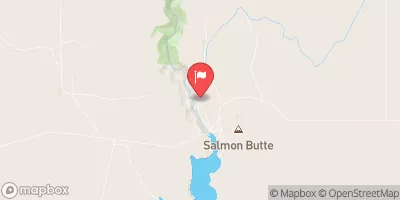
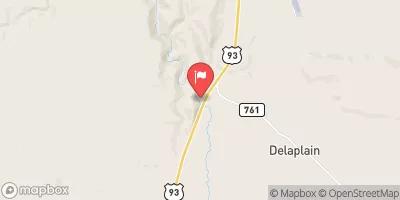

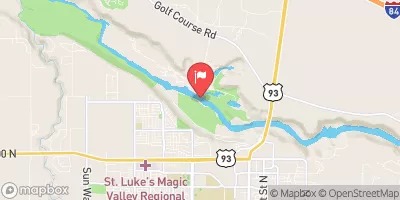
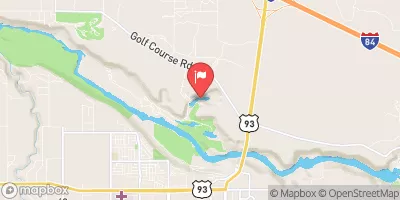
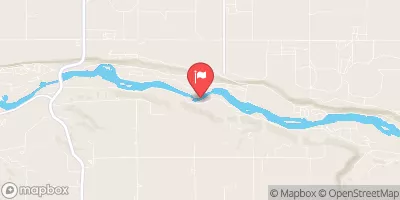
 Lud Drexler Park Campground
Lud Drexler Park Campground
 Lud Drexler Park
Lud Drexler Park
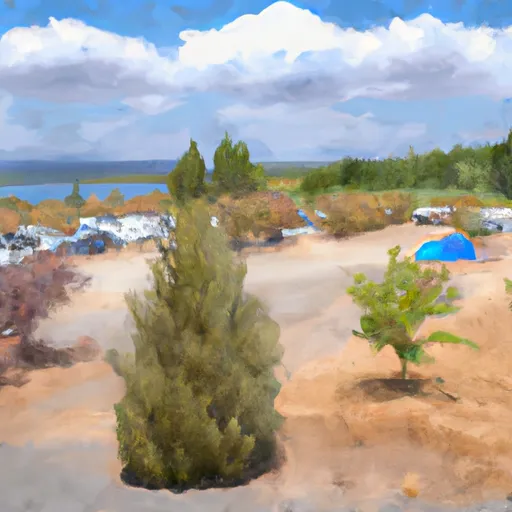 Lud Drexler Park - Salmon Reservoir
Lud Drexler Park - Salmon Reservoir
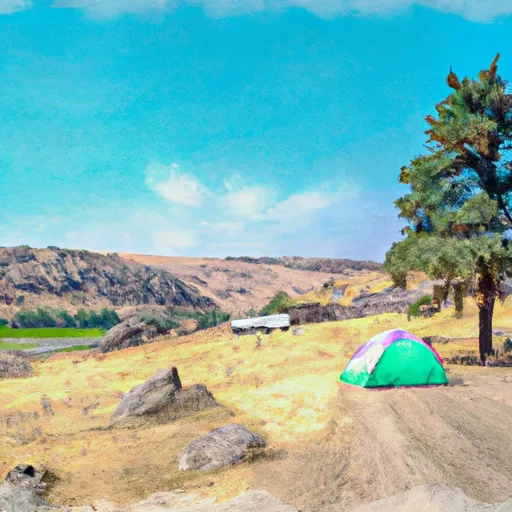 Greys Landing Recreation Site
Greys Landing Recreation Site
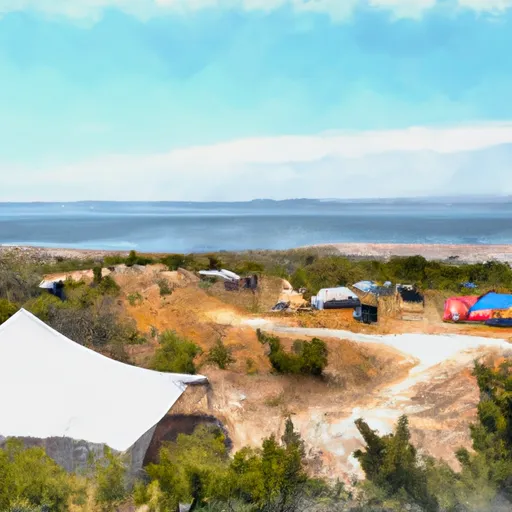 Big Sand Bay Recreation Site
Big Sand Bay Recreation Site
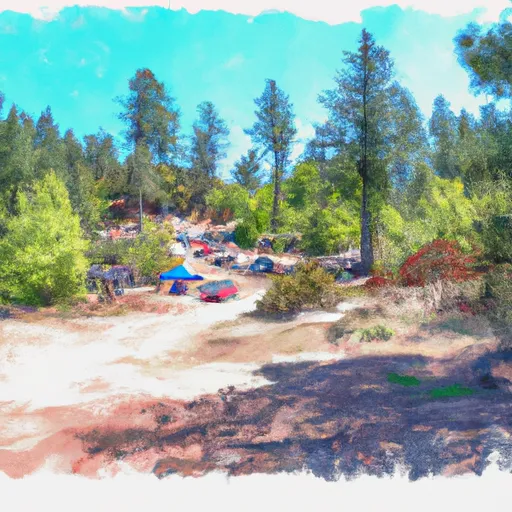 Norton Bay Recreation Site
Norton Bay Recreation Site
 Salmon Falls
Salmon Falls
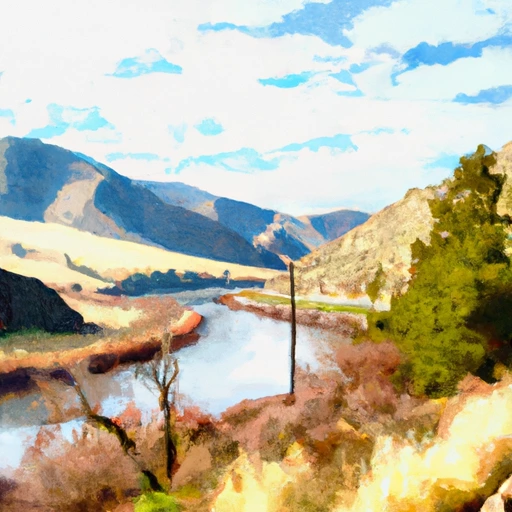 Salmon River Canal Co Res Nr Rogerson Id
Salmon River Canal Co Res Nr Rogerson Id
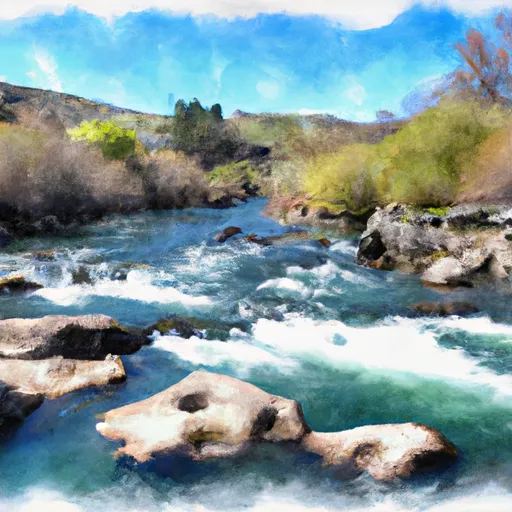 Salmon Falls Creek
Salmon Falls Creek